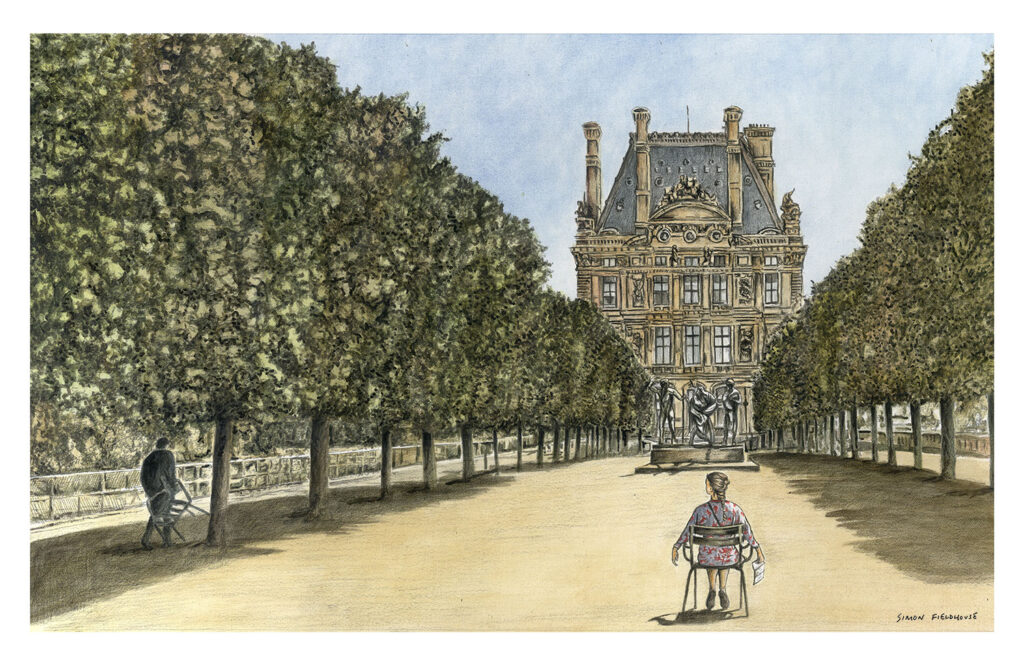
The Louvre from the Tuileries Gardens
The Louvre from the Tuileries Gardens: A Timeless View of Parisian Splendor.The Tuileries Gardens in Paris, with its elegant alleys, exquisite fountains, and enchanting sculptures, offers a serene sanctuary in the heart of the bustling city. Nestled in the heart of this green oasis is a view that has captured the hearts of countless visitors for centuries - the iconic Louvre Museum. The Louvre from the Tuileries Gardens is not just a view; it's a glimpse into the soul of Paris, a testament to its rich history, and a celebration of artistic grandeur.
The Tuileries Gardens, originally a royal palace garden, have evolved into a quintessential Parisian landmark. The gardens serve as a tranquil escape from the urban frenzy, providing both locals and tourists with a place to relax, read a book, or simply enjoy the beauty of nature. Its alignment with the Louvre, the world's largest and most renowned art museum, is no mere coincidence. The two entities have become inseparable, creating an iconic vista that encapsulates the essence of Paris.
As one stands on the terraces of the Tuileries Gardens, the Louvre's architectural grandeur looms majestically on the horizon. The palace's origins trace back to the 12th century, evolving from a medieval fortress to a royal palace, and eventually into the remarkable museum it is today. Its complex architecture, featuring the famous glass pyramid designed by I. M. Pei, stands as a testament to the passage of time, with each era adding its own layer of history.
The Louvre's collection is an embodiment of human creativity, spanning centuries and continents. The Tuileries Gardens offer a unique perspective from which to appreciate this vast artistic treasure trove. The view epitomizes the marriage of nature and culture. Visitors can take a leisurely stroll amidst lush greenery, absorbing the fragrant air and melodious birdsong, while the Louvre, with its wealth of artistic masterpieces, stands as a silent sentinel of human achievement.
This view has not only charmed tourists but also inspired countless artists. Renowned painters such as Camille Pissarro and Claude Monet captured the Louvre from the Tuileries Gardens in their works, immortalizing the serene allure of the scene. It's not just the physical beauty of the view, but the emotions and memories it evokes, that have cemented its status as an artistic muse.
In the changing seasons, the view from the Tuileries Gardens transforms. In the spring, the blossoms frame the Louvre in a tapestry of color. In the summer, the lush greenery provides shade and respite from the sun. In the fall, the changing foliage adds a rustic charm. And in the winter, when a dusting of snow graces the gardens, it becomes a winter wonderland.
The Louvre from the Tuileries Gardens is not just a view; it's a window to the soul of Paris, a testament to its historical and artistic significance, and a constant source of inspiration for all who encounter it. It reminds us of the beauty that can be found at the intersection of nature and culture, of the timeless appeal of great art, and the enduring charm of the City of Light.
The Tuileries Gardens were commissioned by Catherine de' Medici, the Italian-born queen of France, in the mid-16th century. The name "Tuileries" itself derives from the tile factories ("tuileries" in French) that previously occupied the site. Catherine de' Medici, who had spent her childhood in the beautiful Italian Renaissance gardens, was determined to replicate the allure of her native Florence in the heart of Paris. Thus, she employed the talents of renowned garden designer André Le Nôtre, who later became famous for his work on the Palace of Versailles.
Le Nôtre's design for the Tuileries Gardens marked the inception of formal French gardens. He introduced a symmetrical layout, long tree-lined alleys, and meticulously manicured lawns. The grand perspective of the gardens extends from the Louvre Palace to the Arc de Triomphe in the west, creating a sense of unity in the city's layout. These design elements, particularly the grand alleys, define the classical French garden style and have influenced garden design worldwide.
Throughout its history, the Tuileries Gardens have been a backdrop for significant events in French history. The gardens played a role in the French Revolution, serving as a site for political gatherings and protests. In 1793, King Louis XVI was imprisoned in the nearby Temple Tower, visible from the gardens. Later, the beautiful gardens were significantly reconfigured by Napoleon Bonaparte, who added grand statues and ornamental features, some of which still grace the park.
In the 19th century, Emperor Napoleon III and his landscaper, Alphand, undertook another major renovation of the Tuileries Gardens, adding fountains, more statues, and flowerbeds. Unfortunately, during the Paris Commune of 1871, the gardens suffered severe damage, with the palace itself being burnt down. The palace was never rebuilt, leaving the gardens separated from the Louvre but maintaining their unique charm.
Today, the Tuileries Gardens remain a testament to the enduring appeal of French garden design. Visitors can still stroll along the tree-lined alleys, admire classical sculptures, and enjoy the peaceful atmosphere while taking in the timeless view of the Louvre Museum. The gardens are a living museum of horticulture and design, preserving the essence of French formal gardens while adapting to the needs and tastes of contemporary Parisians and tourists. The harmonious blend of history, art, and nature in the Tuileries Gardens makes it an essential part of any visit to the City of Light.